Lenovo's transparent laptop may be the coolest computer you'll hardly see this year
You're looking through it

Lenovo's Project Crystal may be the world's first transparent laptop, and I could not stop looking through it.
Unveiled at Mobile World Congress in Barcelona, Spain, Project Crystal is not entirely transparent like Wonder Woman's airplane, but the large ThinkBook does feature a transparent screen and transparent or glass-top keyboard.
Where there would normally be a dark Lenovo ThinkPad-like frame, is just this vast expanse of glass that comes to life when you flip open the laptop. Lenovo explained that it's actually a transparent micro-LED screen sandwiched between two panes of Gorilla Glass, and all of it is held together with some transparent adhesive. The tech reminded me of the transparent microLED display Samsung showed me at CES 2024.
Despite being 55% transparent, the 720p visuals appeared quite sharp and color-rich on the Windows 11 system. I was particularly impressed with the looping video of a goldfish. The large, see-through display sits above a nano-optical glass keyboard (light passing through proprietary nanopatterning makes the keyboard appear). There's also a large trackpad, and when I touched it, the system unlocked and I could use the Project Crystal pretty much as I would a traditional Windows laptop.
The display is not, by the way, a touch-screen.
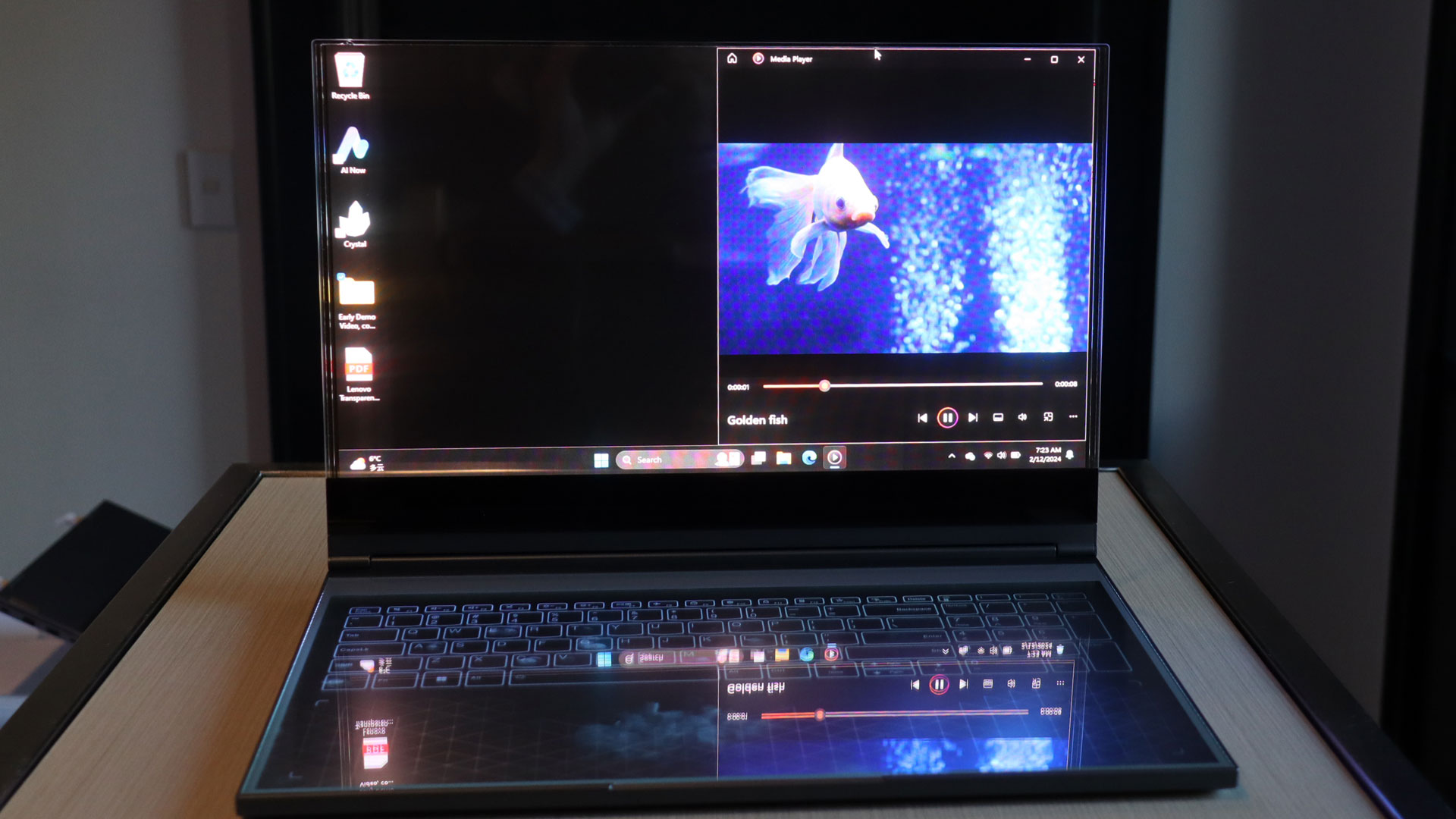
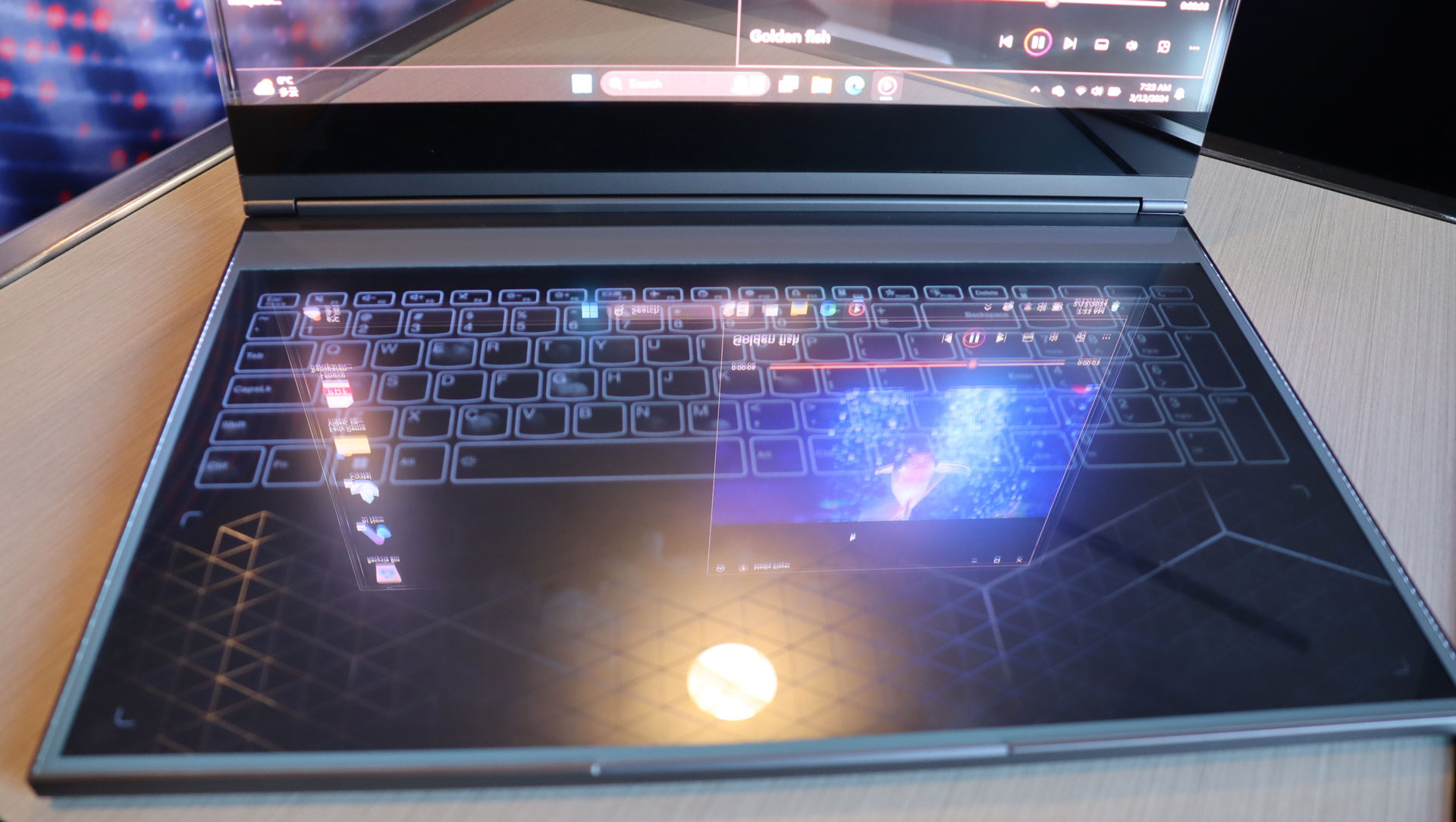
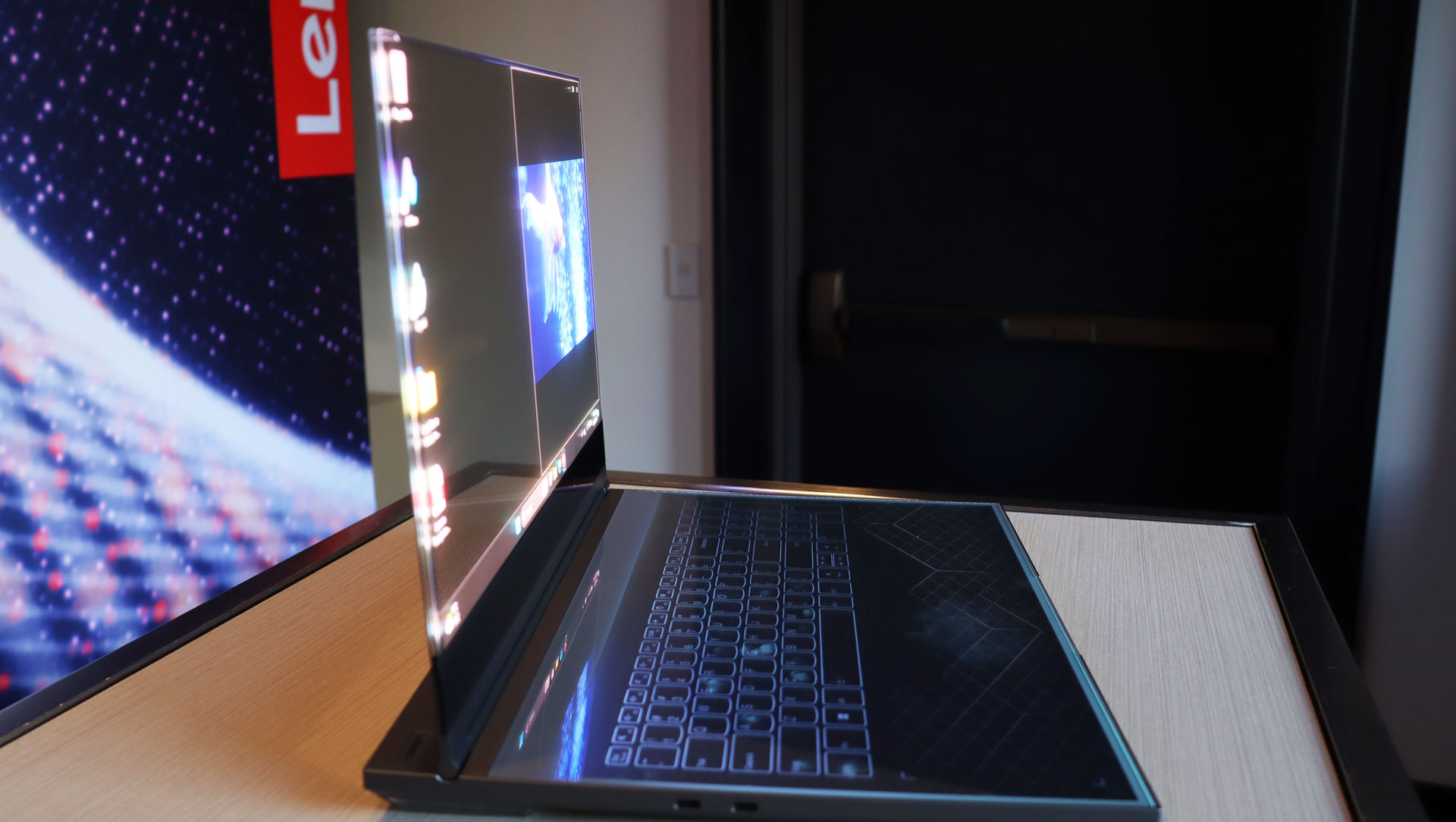

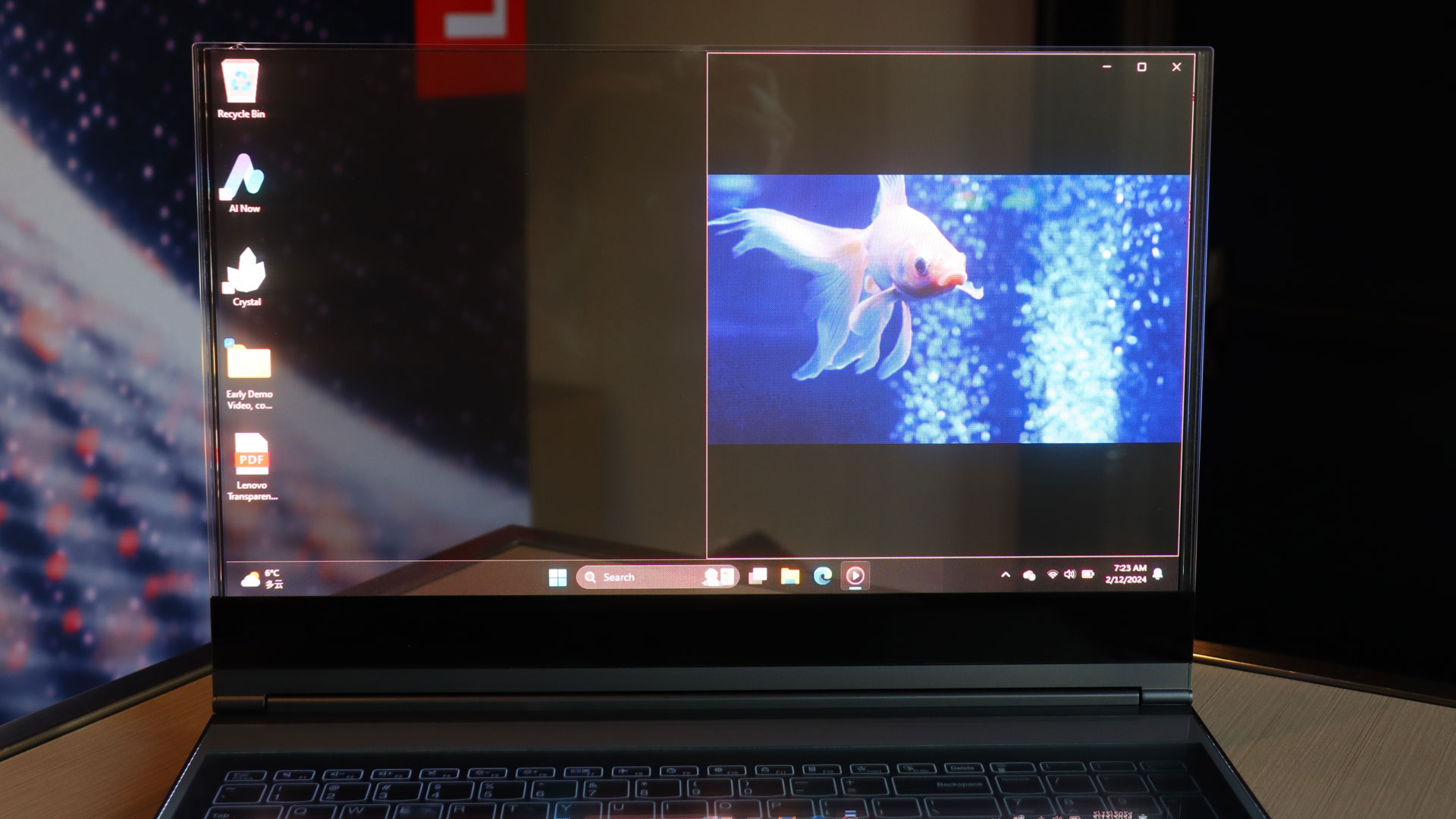



Naturally, I had questions. Who would use this laptop, and what benefit might they derive from a screen that shows the reverse of what you're looking at on its back?
Lenovo executives explained that while this laptop is nowhere near productization or commercial availability, they envision a transparent laptop display enhancing collaboration. Instead of constantly flipping your laptop around to show people what you're seeing, they could just stare at the back of the display and get the reverse view, which I guess might still be helpful.
Sign up for breaking news, reviews, opinion, top tech deals, and more.
It also adds a level of transparency to working and being with others. No longer does your partner have to ask what you're looking at; they can just look at the back of your computer.
There is a more practical and exciting use, though. Lenovo built a camera into the back of the laptop that lets it look at and analyze what's behind it. The onboard Intel AI can then analyze the object and, if you want, offer up some augmented reality that it can display on the transparent screen. When you look through the screen, the AR and your real world are combined. If, for example, there were some flowers behind the screen, the system could conjure up an AR butterfly to land on them.
Lenovo tried to get that working during my demo, but the Wifi network wouldn't cooperate.
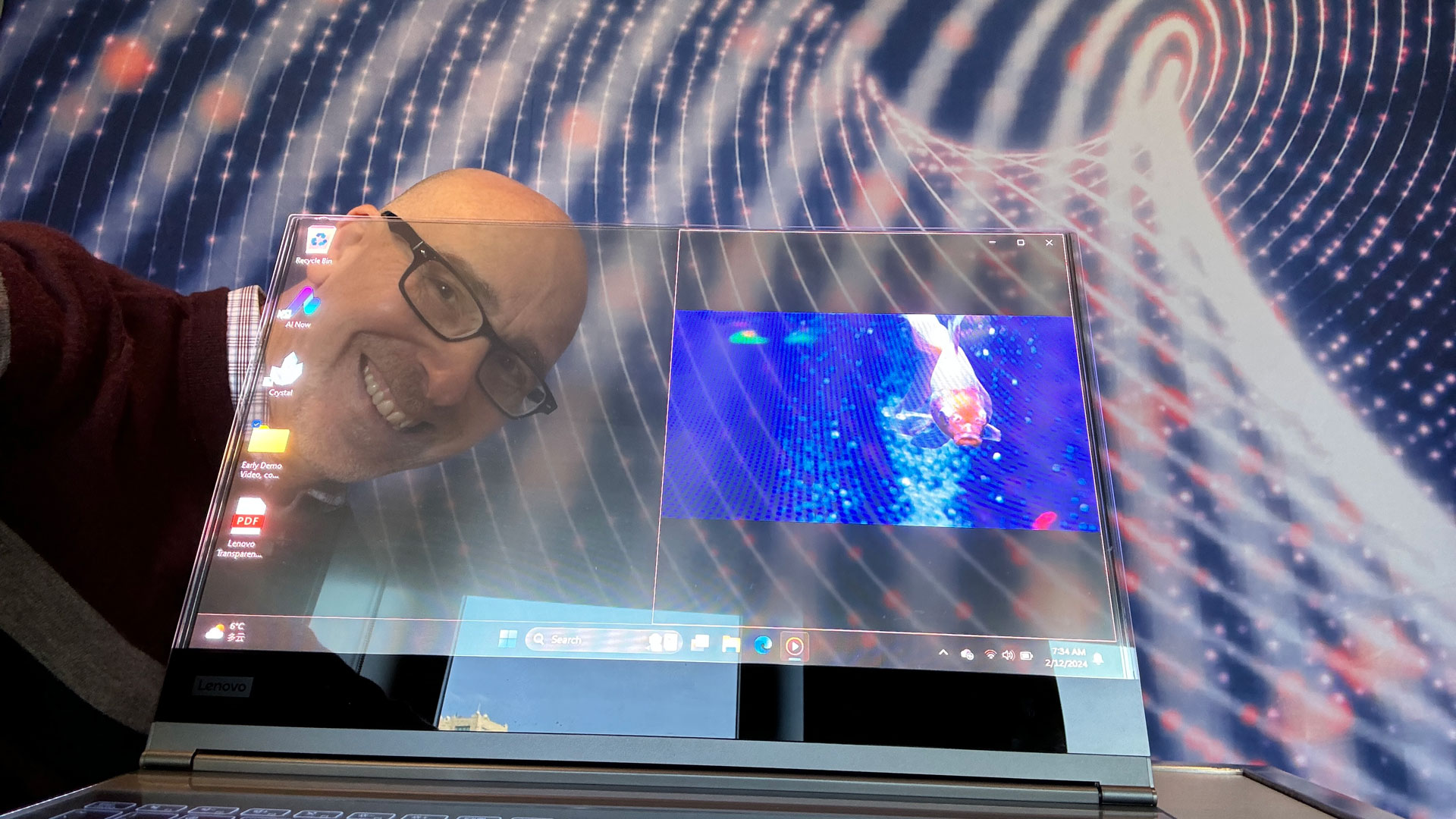
I asked about some of the other obvious limitations like the screen resolution, privacy, and the total lack of keyboard feedback when you're typing.
On the latter, Lenovo imagines that AI could learn your keystroke style, and even if you don't feel exactly where the "T," or "O," or "E" are, hitting in the proximity of those keys in your inimitable typing style might be enough for the AI to interpret your typing intention.
Lenovo also believes that microLED screen resolution could be raised to 2-to-3K while still maintaining transparency.
Finally, I don't think everyone wants people to see what they're working on at all times. Fortunately, Lenovo is working on a system that adds a user-enabled opacity layer to the back.
There is, for now, virtually nothing practical about Lenovo's Project Crystal ThinkBook. it's big, the transparent glass display is wobbly and it looks as though it would not survive a drop. If it ever became a product, it would likely be insanely expensive.
And still, I couldn't stop looking at it.
You might also like

A 38-year industry veteran and award-winning journalist, Lance has covered technology since PCs were the size of suitcases and “on line” meant “waiting.” He’s a former Lifewire Editor-in-Chief, Mashable Editor-in-Chief, and, before that, Editor in Chief of PCMag.com and Senior Vice President of Content for Ziff Davis, Inc. He also wrote a popular, weekly tech column for Medium called The Upgrade.
Lance Ulanoff makes frequent appearances on national, international, and local news programs including Live with Kelly and Mark, the Today Show, Good Morning America, CNBC, CNN, and the BBC.